JOËLLE DE LA CASINIÈRE
Joëlle de La Casinière is French by origin and Belgian by adoption. She is continually educating herself in graphic poetry on various kinds of supports (canvas, paper, film, magnetic tape, optical disc, etc...) and she leads the nomadic life that comes with it.
The videos made in the 80’s by Joëlle de La Casinière and the Montfaucon Research Center deconstruct the idol television by having it reflect with ironic exaggeration upon itself, its imagery, sociological implications, genealogy, perception and religious analogies. They often employ the theses of Marshall McLuhan’s that research not the content, but the effects of the form, the medium television, and translate these visually. The multimedia films of the Montfaucon Research Center transliterate McLuhan’s theories from their linguistic articulations into self-reflexive televisual images. The videos are ’total art productions’ (Gesamtkunstwerke), which employ images, music, and language in speech, writing and songs - all semiotic systems used in television. The artists collage and combine found footage and self-generated images or slow down and focus the image to such an extent that conventional perception is interrupted and a reflection on the medium becomes possible.
The term ’Gesamtkunstwerk’ is particularly appropriate because of its genesis in musical theory, particularly with regard to the genre of opera, the art form which is defined as the synthesis of all the arts, of all media. The videos by the Montfaucon Research Center are - in the true sense of the word - theatrical productions, in which music and songs are media elements of considerable importance, and terminology from the theory of music and theatre offers an adequate vocabulary to describe the videos: they are ode, commedia dell’arte, satire, operetta, oratorium - all transferred onto a magnetic medium. The multimedia approach of the videos is multiplied by the fact that these theatrical and musical art works in the form of complex video films are also the result of joint efforts and co-operation between author, performer, singer, composer, director and technician - a feature that the films by Joëlle de La Casinière share with the medium of television. Video and television possess a number of structural characteristics in common, but they also differ essentially, and the Montfaucon Research Center uses these facts intentionally in their analysis, reflection, criticism and deconstruction of the television medium. When played on a video recorder that transmits the visual signal into a TV monitor, the video film disguises itself as a TV broadcast -by looking at the monitor alone, the viewer cannot know whether he or she is watching a simultaneously broadcast TV programme or a pre-recorded tape. Thus the pirate ship of the Montfaucon Research Center sails under the flag of televisual subversion onto the screen.
A major structural difference to a TV broadcast and also an essentially important element for the approach of these art videos is their performance character - again the linguistic and semantic relation to the theatrical - as well as the fact that they can be repeated endlessly, allowing for critical, reflective viewing. The artists employ video and its potential as an educational medium in order to transmit their "teaching programme" via TV. But video technology does not merely provide an endless continuation of the uniqueness of the temporally fixed and limited TV programme, in fact, video does not need a camera to generate images or a microphone to record sound. It is therefore completely free from representing reality and can create its own visual cosmos. Video as autopoetic medium is perfect for an analysis of itself in its own medium.
Thus the protagonist of the videos Le moyen de s’entendre and Le bruit de l’image listens on the telephone to essays and reflections on communication media and theory. In McLuhan’s media archaeology the telephone is structurally related to TV and is considered its predecessor, and the videos by the Montfaucon Research Center follow the theorist’s genealogy. In Le moyen de s’entendre an offscreen voice reads a text by Michel Bonnemaison. The listener is not only the viewer of the video, but its protagonist, who alternately listens to the telephone or speaks into it - continuing the speech from off-screen. He wears dark sunglasses: his vision is not addressed. The video image is separated into two halves: on one side it is dominated by the actor, on the other by graphics made out of abstract, blue and red patterns, on which the key words of the discourse appear in large letters. These graphics illustrate through the symbolism of their colours McLuhan’s categorisation of the media as hot and cold - according to the amount of information they convey, with telephone and television being perceived as cold media.The music in the video again escalates a reflection on the telephone as medium by transferring the ringing and other acoustic signals into electronic sound compositions. Towards the end of the video, the actor doubles: he now appears on both halves of the screen and talks to himself. He seems to be trapped in a communication loop - a discourse that cannot escape the medium it reflects.
Le moyen de s’entendre deploys various strategies for communicating and imparting its semantic payload, its message: spoken and written texts, image and music all translate an existing essay that was initially conceived as text. As a result, the reception of the text is fundamentally altered and becomes the actual subject of a video that reflects on the divergent structures of media and their varied effects. The perception of a message differs considerably when read, heard or seen, and thus both genesis and structure of the video mirror the historical and sociological change from oral to written and eventually televisual culture. Unlike those videos by the Montfaucon Research Center which collage, analyse and comment found footage in a musical or theatrical way, Le moyen de s’entendre represents the visual translation of a critical essay that illustrates itself.
Le bruit de l’image traces with subtle humour a genealogy of television by the archangel Gabriel as the herald of new messages. The speaker, whose face is shown in close-up, wears grotesque glasses on which artificial, over-sized eyes seem to see in any direction. Reflecting perception, seeing, is one of the leitmotifs of all videos, and eyes play an important metaphorical role: hidden behind dark sunglasses in the video Le moyen de s’entendre they are not needed when decoding a message via telephone, wide open (in the video Television Man) they are an expression of ecstatic rapture, and the artificial, restlessly flickering eyes in Le bruit de l’image symbolise the incapability of focused viewing. The actor becomes an symbol of the viewer who does not see. The ridiculous glasses also evoke the tragic-grotesque clown of absurd theatre as well as the protagonist of Bachtin’s carnival, exceptional circumstances in which the unspeakable can be said, and in which opposites can be married. The video’s background is flickering in TV’s primary colours: red, green and blue. Accompanied by the sound of minimal, electronic music a female voice pronounces a text, interrupted by sequences in which the actor talks into the telephone and communicates with a child that plays the role of the archangel Gabriel.
A sophisticated essay by Michel Bonnemaison that the video is based on guides us through the histories of religion and media and foregrounds territories that they share: both in Christian as well as in Muslim tradition the archangel Gabriel plays the role of the herald. He is a mediator, the medium that delivers a celestial message down to earth - just as television does when a signal is transmitted from an orbiting satellite into the living room. Gabriel deciphers the divine message, just as the antenna decodes its heavenly signals. In the video, television is ironically described as the third testament, following the Old Testament of the Father with its tablets of stone, the New Testament of the Son, the book - now the testament of the pure spirit. The TV image does not possess material existence, it is appearance, illusion.
As in Le bruit de l’image, the video Television Man also emphasises religious and sacramental implications of the medium of television. It also renders text as visual and visionary material. According to de La Casinière’s accompanying text it depicts the speech of an ecstatic at the foot of mount Sinai. However, the video does not refer to this place - the image shows the actor’s face in close-up, the background is diffuse and blurred. The state of ecstasy expresses itself in the slow, sometimes prolonged rhythms of speech and the glassy, open eyes that actor Enrique Ariman does not close a single time during the 40 minute work - one take recorded without a single cut: the wide-open eyes of the ecstatic do not look to an outside, but within. He wears headphones, from which he receives the messages that he disseminates - a contemporary and technical version of the devotional image.
The ecstatic talks to the viewer and to himself, obliviously, an ironic panegyric on communication media, television and telephone. The text by Michel Bonnemaison is complex, full of aphorisms, poetry, fragments of thoughts, questions and quotations. They culminate in the incantation of ’Special Interest Television’, a form of television that is expressed in the televisual format of TV’s grammar, the manifestation of its discourse and the use of the medium’s own rhetoric - the programmatic description of the approach the Montfaucon Research Center takes when dealing with the medium of television. As in all their videos, the transition between reflection upon television and reflection on their own critical methodologies is fluid, and previously earnest analytic considerations transform into ironic subversion. The sermon is turned into an anti-manifesto, when in carnivalesque reversal capitalism and the pursuit of profit are revealed as the real aims of this ’Special Interest Television’ - that advertising and, as a result, profit maximalisation is the true message of the medium is repeatedly stated in the artist’s videos.
Television Man is, unlike all the other videos, filmed in black and white with a handheld camera that intentionally blurs the image. This video seems more artificial, closer to the early days of TV because of the retro technique, strangely timeless, almost classical, but also distanced. Because of its focus on a few media only - minimalist electronic music, the spoken word and the uncut image - the video allows a total concentration on the speech delivered and the state of ecstasy. If the medium is the message, and if this medium possesses quasi-religious features, then the ecstatic as the prophet preaching his message is an apt personification of this medium.
The sanctity of TV as formulated by the Montfaucon Research Center also determines the form of the video Televessel, a work that Joëlle de La Casinière refers to as an ’oratorium’. And indeed orchestration and singing - both composed for the video and an essential part of it - follow the rhythm of recital, solo and choir. Televessel sings a selective range of TV broadcast, reporting, news programmes and talk shows. The video is made out of a number of appropriations from such sources, all of which show talking heads that have been isolated from their original context and tele-montaged into a new order. The video superimposes numeric notations and comments over these sequences, allowing a categorisation of those talking heads according to the criteria of dress and hairstyle, mimics, studio background and equipment. Subtitles that make short, ironic statements commenting on the original material appear alongside the singing. Derived from film and television, this technique usually serves to aid understanding in cases of inaudible spoken texts. Also used to add explanatory captions to images, it is here employed by the artists in order to clearly and understandably translate their reflections on the medium of television and in order to deconstruct it with its own methodologies.
Following the logic of the musical composition the TV images in the video are interrupted by various intermezzi that obey a set rhythm: sequences of colourful backgrounds referencing test patterns are visible while a male voice announces apparently serious pearls of wisdom on television. We also see clips from science fiction animations, during which an off-screen voice again offers comments on television. Exploiting structural relationships between cartoons and television, Joëlle de La Casinière repeatedly inserts sequences of comic figures into her videos. This is done in a particularly subtle way in the video Idéale Audience, in which cartoon figures utter short comments or direct questions - that were originally formulated by Marshall McLuhan - to the viewer, who within the flow of the video is suddenly addressed directly and is confronted with the idea that television might actually talk to him or her. And this is indeed the case - the crude comic characters are a McLuhanian embodiment of television.
The video Le Chant du Satellite is conceived in a similar way. It is described by Joëlle de La Casinière as a "comico-lyrical ode to telecommunication" - and yet another multimediated meditation on television, with the focus on the process aimed at the technological and economic control of the news. An operetta singer, with her hair done in the style of the 40s and dressed in an outlandish hat, performs a libretto that explains the rules and procedures of Club Telefusion - a fictitious television and news agency. The chanteuse is placed against a backdrop which shows images from recording studios and relevant technical equipment as short intermezzi text plates are inserted, graphically visualising the key words of the libretto. These are followed by fragments from news programmes, in small inserted ’news windows’ and accompanied by subtitles repeating the text of the news as well as describing what the television screen shows. Within these highly complex and multi-layered image frequencies the video dissects itself as sequences of its own genesis and production are inserted. The television programme is split up into its technical and structural components and translated into a syncretic assemblage that employs all available media and transmits on all communication channels.
The elaboration on television culminates in the video Idéale Audience, which marks the chronological end of Joëlle de La Casinière’s reflection on the medium and a metaphorical closing chapter. Here de La Casinière hands over the role of the viewer - her own - to Idéale Audience, a gadget that can ceaselessly take in television images and thus takes over from the viewer and renders him or her superfluous. The video is a montage out of the jingles of French TV stations, programme previews, ads and trivial entertainment programmes. Following a strict choreography the seemingly unordered clips are clearly structured: sequences of television images are followed by short scenes in which cartoon figures utter theses and questions from McLuhan. Announced by a gong, they provide a break within the patterned flood of images, a pause for thought. Spoken passages and sequences of song recur like a refrain, and the texts they contain scroll across the screen.
All these videos have in common that they do not research what television transmits, but how it transmits it. They analyse the technological, sociological and philosophical implications of the medium and its message in televisual ’total art productions’ that are inspired by literary and musical forms. This is done with the help of the television image itself and within a medium, video, that also makes use of the television monitor. However in sharp contrast to the medium they deconstruct, the Montfaucon Research Center wants their messages to be semantically intact and therefore they pursue two basic strategies: the focus on the spoken word only or the multiplication of the text via song, language and writing. And since they cannot escape a post-modern semiotic horror vacui with their statements on the medium of television, they distribute their message with anarchic pleasure on all channels, via all media, in this very medium, and they do so with irony, esprit, poetry, astuteness and carnivalesque irreverence.
(Extract from an essay by Astrid Mania, translated from German by David Hatcher. Published in the argos festival 2003 catalogue)
The artist’s few recent solo shows took place in 2006 at the Croy-Nielsen Gallery (DE) and at the Centre International de Poésie in Marseille (FR), in 2007 at the Heidelberger Kunstverein in Heidelberg (DE) and at the Instituto Cervantes in Brussels (BE), in 2008 at the Brandenburgischer Kunstverein in Potsdam (DE) and in 2011 at the Birmingham City University, School of Art and Design in Birmingham (UK).
Group exhibitions:
2009: Argos - Open Lounge, Brussels (BE) - Villa Merkel & Bahnwärterhaus, Esslingen (DE)
2010: The World in Your Hand, Kunsthaus Dresden (DE)
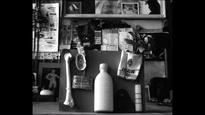
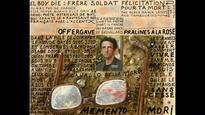
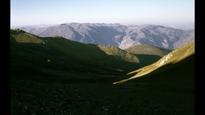
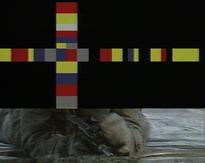
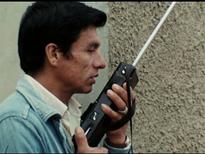
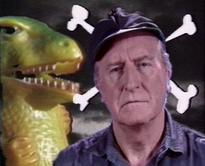
- ° 1944 Casablanca
-
Links
-
EVENEMENTEN
- argos open lounge
- Joëlle de La Casinière - Dans la maison (du Montfaucon Research Center)
- So Happy. A Selection of Joyful Rebellions from the Argos Distribution Catalogue [12th Rencontres Internationales, Círculo de Bellas Artes, Madrid]
- There all is order and beauty
- VIDEOZONE 2016
- Joëlle de la Casinière & Michel Bonnemaison - Suite / Rose de Lima
- Argos X Cinematek @ Kanal
- Joëlle de la Casinière - 50 Tablotins musiqués
- Face To Face: selected videos from the Argos collection
- INTER V / MISIONES - A journey across the Americas II
- Mise en abîme - Dismantling the Economics of Television
- Joëlle de la Casinière at Pompidou
- Argos @ Mobile Institute, Brussels
-
At view in the media library
WERKEN- 50 Tablotins Musiqués
- Again On The Seas
- Cargadores [version with soundtrack]
- Dans la Maison (du Montfaucon Research Center)
- Grimoire Magnétique
- Hommage à Michel Bonnemaison
- Idéale audience : un paysage télévisuel en France
- L'animation à l'ère des médias
- La première partie du Roi Henry IV de W. Shakespeare : une analogie
- Le chant du satellite
- Le petit touriste
- Le plein du vide
- Le Roman de Fauvel
- Que Será Será
- Que Será Será: Carmen 84
- Que Será Será: Envolez-vous
- Que Será Será: Les diamants roses
- Que Será Será: Melodrama
- Que Será Será: Scoop
- Que Será Será: Sosie d'Elvis
- Rose de Lima
- S.A.T.S. (Short Airfield for Technical Support)
- So Happy
- Suite
- Tableaux des Indes galantes
- Telecolor inflammable
- Televessel
- Version originale01
- Vidéo à la chaîne I
- Vidéo à la chaîne II
- Vidéo à la chaîne II - archi / simulation
- Vidéo à la chaîne II - art electronique
- Vidéo à la chaîne II - art surveillance
- Vidéo à la chaîne II - baby-sitting
- Vidéo à la chaîne II - catalogue
- Vidéo à la chaîne II - clip/ordinateur
- Vidéo à la chaîne II - disc
- Vidéo à la chaîne II - fast food
- Vidéo à la chaîne II - leçon de golf
- Vidéo à la chaîne II - le présentateur de 20 clips [20 x 30'']
- Vidéo à la chaîne II - magnétoscope
- Vidéo à la chaîne II - mariage
- Vidéo à la chaîne II - medico
- Vidéo à la chaîne II - mondrian
- Vidéo à la chaîne II - porno
- Vidéo à la chaîne II - portrait de famille
- Vidéo à la chaîne II - presse teleramique
- Vidéo à la chaîne II - répérage cambriole
- Vidéo à la chaîne II - robotron
- Vidéo à la chaîne II - testing
- Vidéo à la chaîne II - visiophone